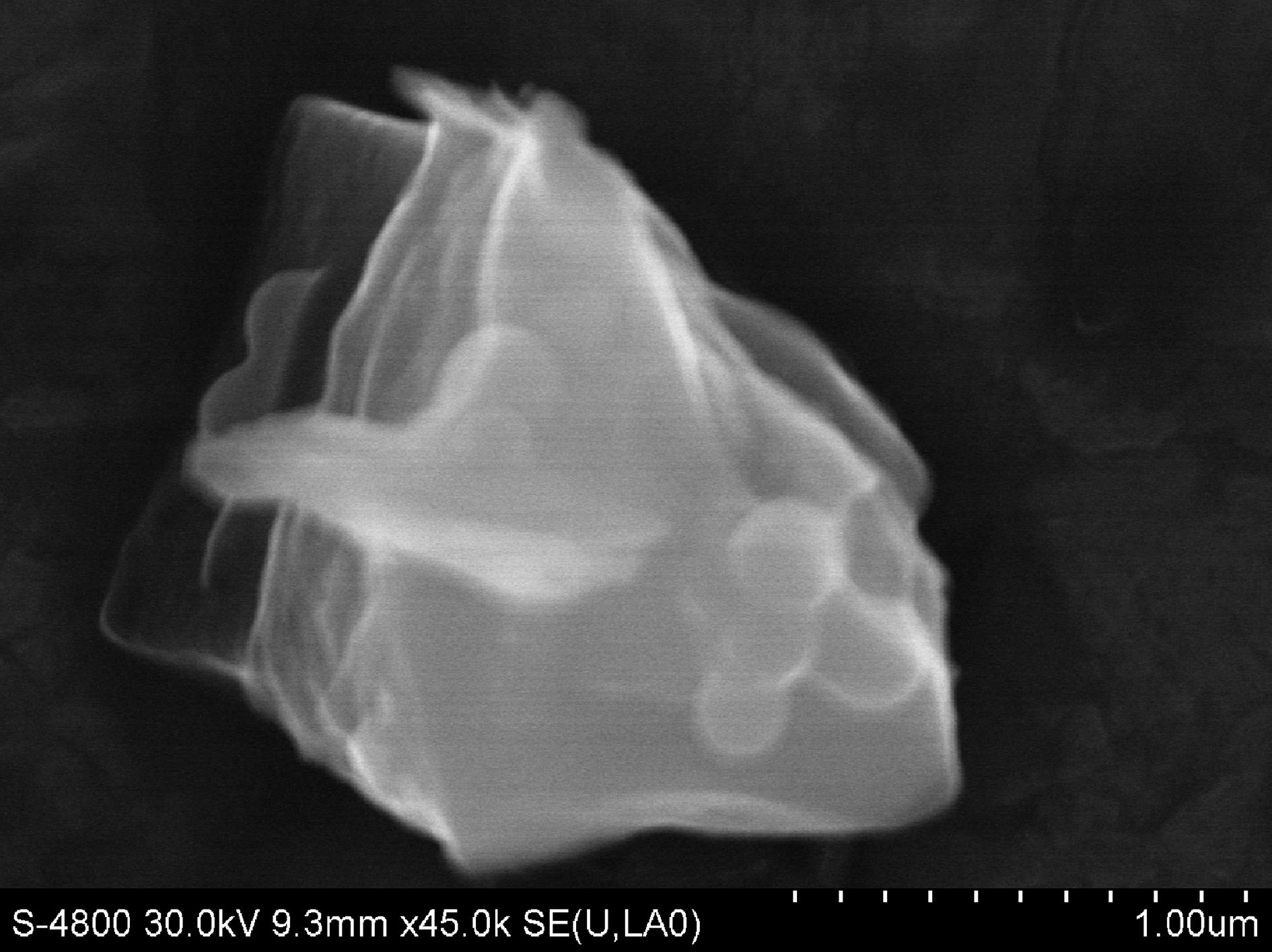Graphene/carbon ball composite material, and preparation and application thereof
A composite material and graphene technology, applied in the field of composite materials, can solve the problems of low capacitance and easy agglomeration capacitance, and achieve the effects of wide sources, reduced agglomeration, and low cost
- Summary
- Abstract
- Description
- Claims
- Application Information
AI Technical Summary
Problems solved by technology
Method used
Image
Examples
Embodiment 1
[0044] (1) Preparation of composite materials
[0045] (1) Preparation of graphite oxide: Take 92ml of concentrated sulfuric acid with a mass fraction of 98% in a 1000ml beaker, use an ice-water bath to lower the temperature below 4°C, stir vigorously and add 4g of high-temperature pyrolysis graphite powder at the same time; After stirring vigorously in a water bath for 0.5h, add 3g of sodium nitrate and 12g of potassium permanganate in turn; after vigorously stirring in an ice-water bath for 1h, take out the beaker, allow it to stir vigorously at room temperature for 3h, then slowly add 300ml of distilled water; After recovering to room temperature, add 500ml of distilled water again, and add 50ml of hydrogen peroxide with a mass fraction of 30% after 10min; Washed several times until there is no SO in the filtrate 4 2- It exists and is neutral; the suction-filtered product is vacuum-dried at 60°C for 18 hours, and ground into powder to obtain graphite oxide.
[0046] (2) ...
Embodiment 2
[0056] (1) Preparation of composite materials
[0057] (1) Preparation of graphite oxide: same as in Example 1.
[0058] (2) Preparation of graphene oxide precursor dispersion: Weigh 0.08g of graphite oxide, add it into 400ml of distilled water under strong stirring, adjust the pH to 9-10 with 10% ammonia water, and ultrasonicate it at room temperature for 1h. A 0.2 mg / ml graphene oxide precursor dispersion was obtained.
[0059] (3) Preparation of carbon spheres: Dissolve 11.52g of glucose in 160ml of distilled water, transfer the glucose solution to a 200ml autoclave with polytetrafluoroethylene liner, and conduct hydrothermal treatment at 180°C for 7h. The hydrothermal product was suction filtered and washed repeatedly with ethanol and distilled water. After washing, the product was vacuum-dried at 60° C. for 12 hours to obtain carbon spheres.
[0060] (4) Preparation of carbon sphere dispersion: Weigh 15 mg of carbon spheres, grind them into powder, add them to 100 ml o...
Embodiment 3
[0068] (1) Preparation of composite materials
[0069] (1) Preparation of graphite oxide: Same as Example 1.
[0070] (2) Preparation of graphene oxide precursor dispersion: Weigh 0.12g of graphite oxide, add it into 300ml of distilled water under strong stirring, adjust the pH to 9-10 with 10% ammonia water, and ultrasonicate it at room temperature for 1h. A 0.4 mg / ml graphene oxide precursor dispersion was obtained.
[0071] (3) Preparation of carbon spheres: Weigh 10.176g of glucose and dissolve it in 160ml of distilled water, transfer the glucose solution to a 200ml autoclave with polytetrafluoroethylene liner, and conduct hydrothermal treatment at 170°C for 5h. The hydrothermal product was suction filtered and washed repeatedly with ethanol and distilled water. After washing, the product was vacuum-dried at 60° C. for 12 hours to obtain carbon spheres.
[0072] (4) Preparation of carbon sphere dispersion: Weigh 20 mg of carbon spheres, grind them into powder and add them...
PUM
| Property | Measurement | Unit |
|---|---|---|
| thickness | aaaaa | aaaaa |
| concentration | aaaaa | aaaaa |
| diameter | aaaaa | aaaaa |
Abstract
Description
Claims
Application Information
 Login to View More
Login to View More - R&D
- Intellectual Property
- Life Sciences
- Materials
- Tech Scout
- Unparalleled Data Quality
- Higher Quality Content
- 60% Fewer Hallucinations
Browse by: Latest US Patents, China's latest patents, Technical Efficacy Thesaurus, Application Domain, Technology Topic, Popular Technical Reports.
© 2025 PatSnap. All rights reserved.Legal|Privacy policy|Modern Slavery Act Transparency Statement|Sitemap|About US| Contact US: help@patsnap.com



